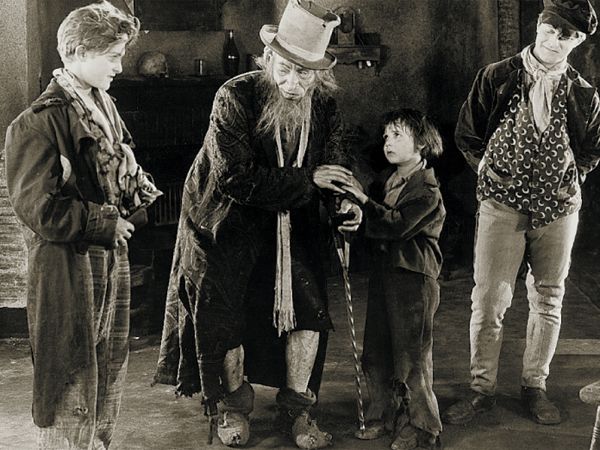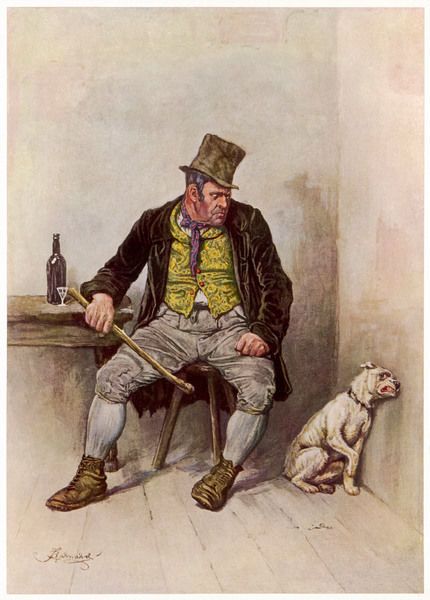Oliver Twist at the Kennington Bioscope
Posted by keith1942 on March 16, 2023
This screening on Wednesday March 1st was from a 16mm print which was 40 years old but still in a well preserved state. This version of Dickens’s early novel was released in 1922. Later it was lost and resurfaced in 1973. That print lacked title cards which were replaced with some of the cast providing the text, presumably from memory.
The film was produced by Jackie Coogan Productions headed by the independent producer Sol Lesser. Jackie Coogan had become an overnight star the previous year in the now famed Chaplin film, The Kid. He had previously worked in vaudeville and in small parts in films. His career lasted into the 1980s including an amount of television work. Coogan’s Oliver is the star part in this version and dominates the film with several scenes designed to display his talents. The accompanying star is Lon Chaney. Chaney had worked in films since the early teens and this was just the point at which he reached stardom. His part is that of the villainous Fagin. Two other notable characters are Bill Sykes, played I thought with real violent menace by Bill Siegman. Gladys Brockwell plays the ill-fated Nancy with a strong screen presence.
The film was directed by Franlk Lloyd; and he wrote the scenario with one Harry Well. . Hailing from Scotland he started out acting in films and then [as was so often the case] moved on to direction. His directing career lasted until the 1950s; his most successful film was the 1935 Mutiny on the Bounty, notable for Clark Gable playing opposite Charles Laughton.
This version is about a full reel shorter than the original. This is not especially noticeable though there are places where the plot moves along at a real pace. The title cards were, apparently, reconstructed with the assistance of Jackie Coogan and Sol Lesser. I suspect that they relied in part on the Dickens’s original as many title cards seem to come straight out of the novel. The cinematography is fine but is predominately in mid-shot and long-shot. The editing is likely affected by the missing footage: the sets and locations are passable but not always completely convincing. The lack of close-ups seems to undermine Chaney’s portrayal which received mixed reviews. It is also likely that the production was tilted in favour of Coogan.
The film is fairly faithful to the book allowing for the need to be condensed. It includes part of Oliver’s changing cirumstances following a failed robbery missi9ng from some other verions. The film ends, of course, with a Coogan flourish. Fagin rather disappears but Bill Sykes has memorable moment. And Bull’s Eye, who is seriously underwritten in the film, at last has a proper exit.
The programme also included four short films or segments provided by Christopher Bid who also provided introductions. There was a digital version of Mrs Lirriper’s Lodgers (1912) , adapted from a Charles Dickens’s story from 1863. On 35mm we had a fragment of Lon Chaney in an early film Tangled Hearts (1916), Chaney was hardly recognisable in relation to his famous roles: and an incomplete Fred Evans/Pimple version of Oliver Twisted (1918). The production values, as so often, were not great but I thought it definitely funnier than most Pimple outings. And the last title was Hello Hollywood (1927), one of those newsreel type films about Hollywood with [bated breath] a card reference to Lon Chaney.
The whole programme was well attended with over fifty participants and an excellent piano accompaniment from John Sweeney.


Leave a comment